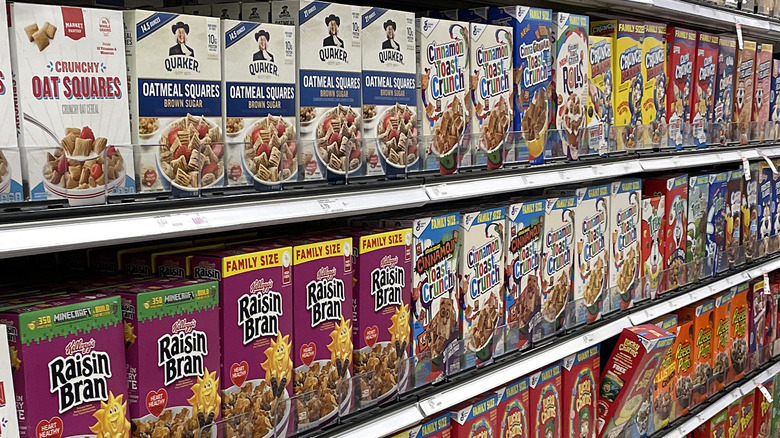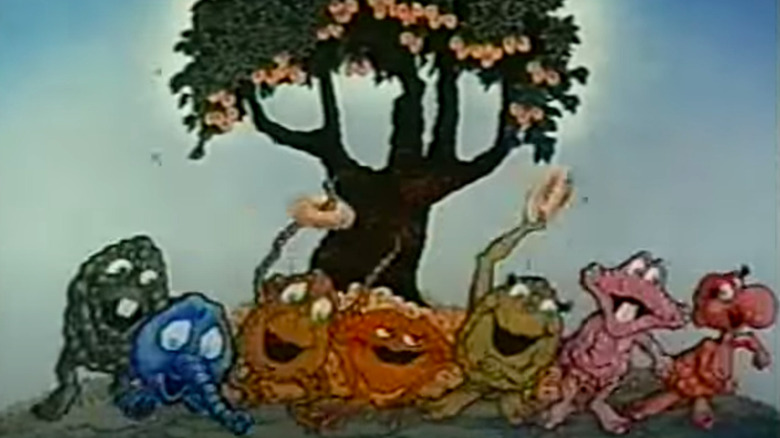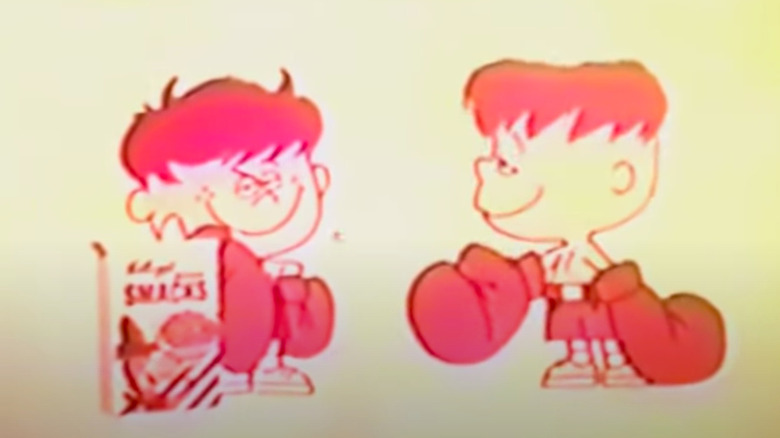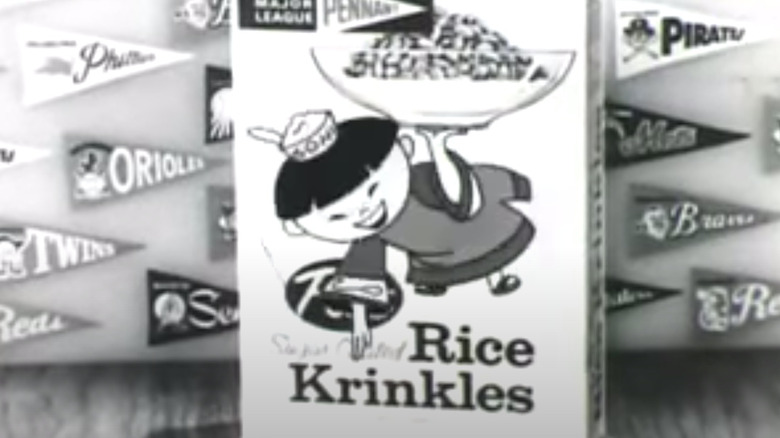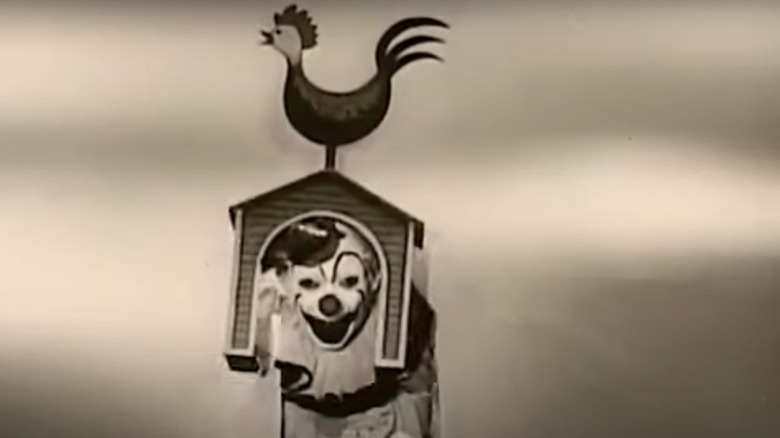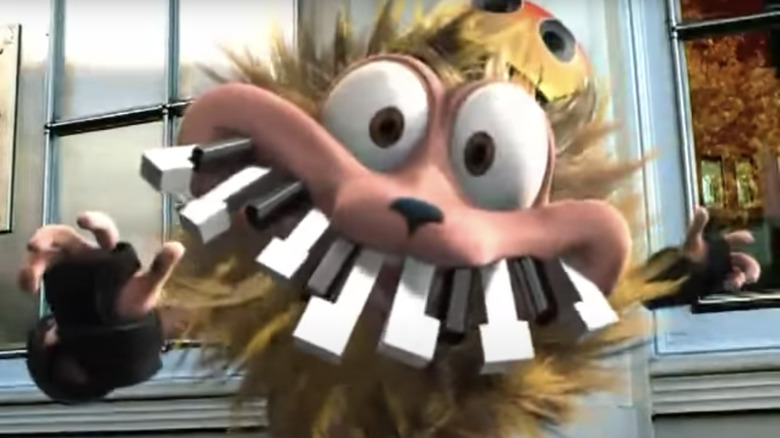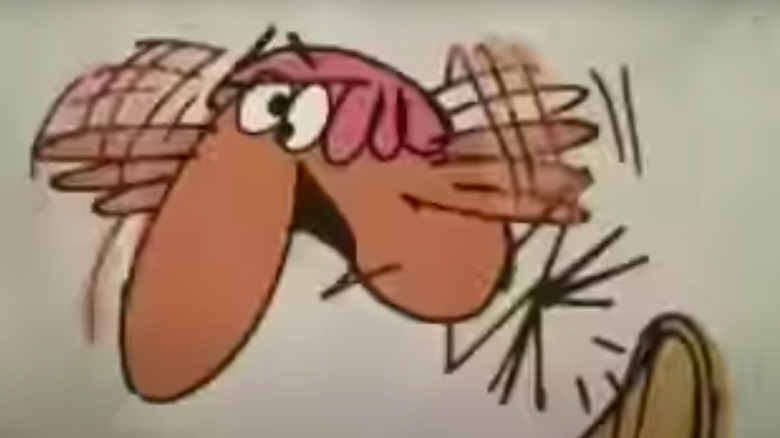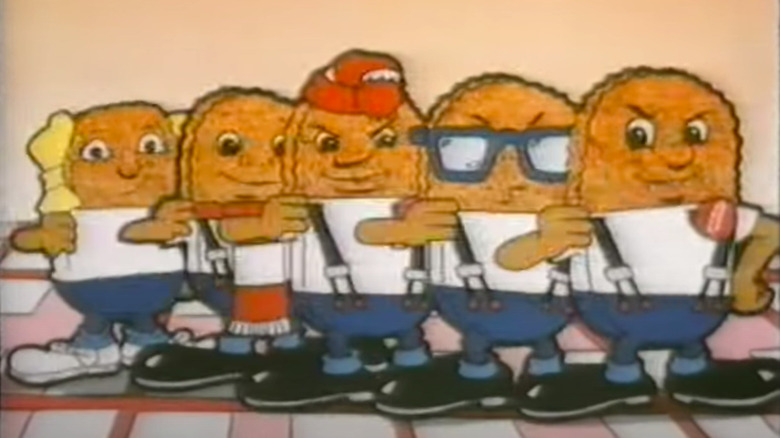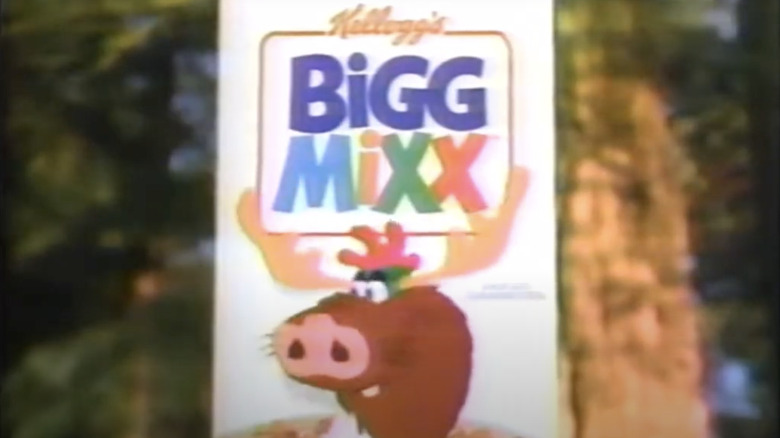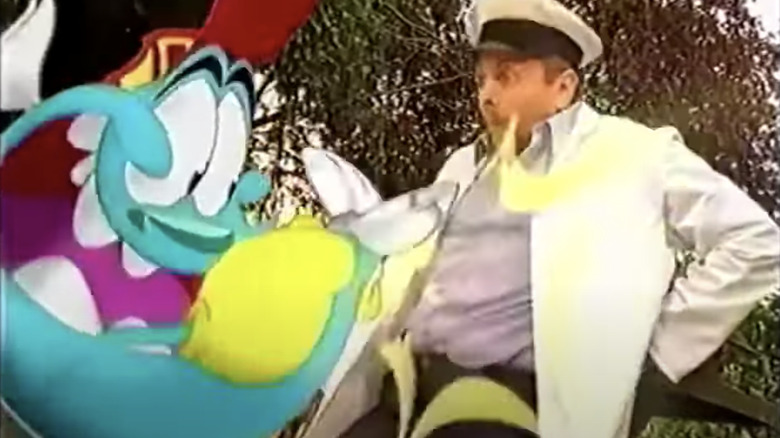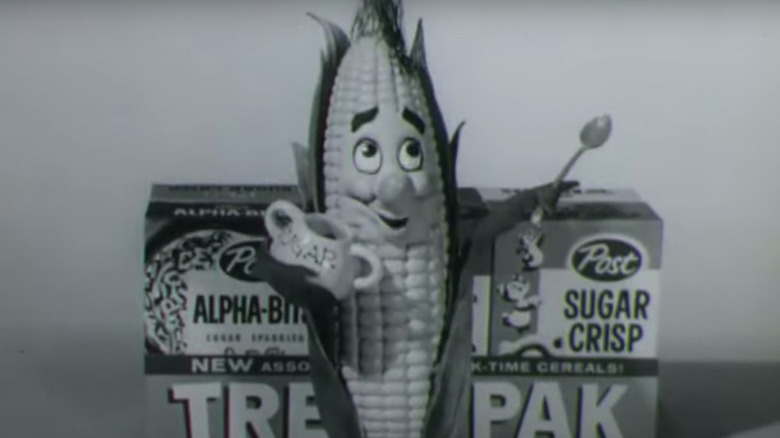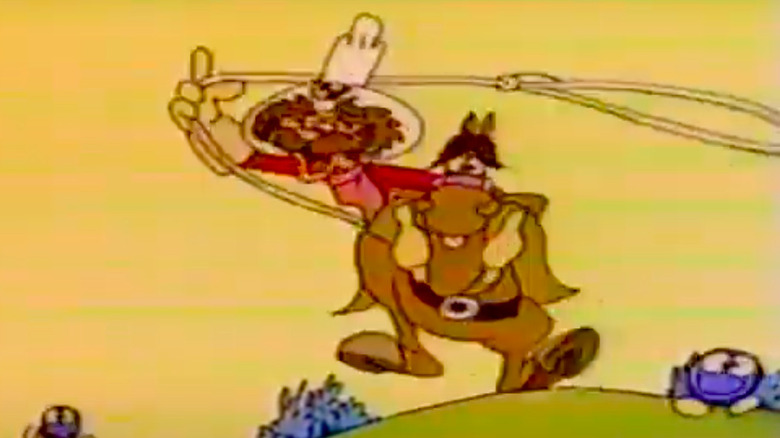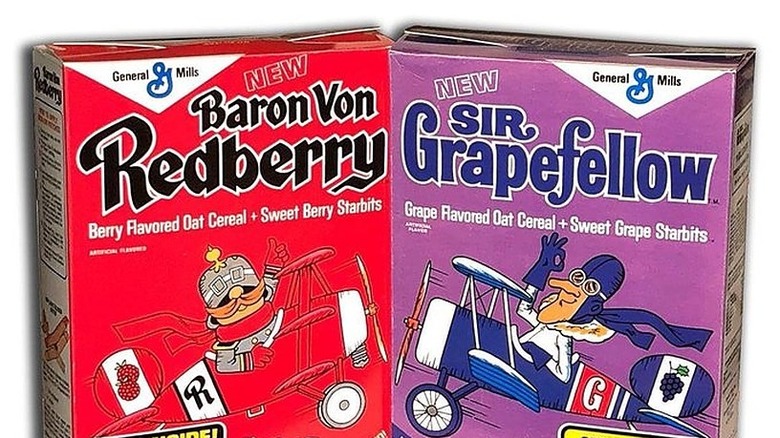Bizarre Cereal Mascots You Probably Forgot About
There is no such thing as a normal cereal mascot, unless you count Tony the Tiger. He might be great, and his fantastic run as cereal mascot for Frosted Flakes from 1951 to the present is certainly outstanding. But, Tony is the exception, not the rule. Not many cereal mascots make it more than a decade with their faces on the box, let alone flirt with a century. For every Toucan Sam, 10 other concepts are either forgotten or scrubbed off the record books.
Advertisers seemed to have figured out that kids don't care about lowering cholesterol. They want strange cereals with colors, creativity, and magic both inside and outside the box. Sometimes it works, and sometimes we look back at an ad from the '70s and wonder what the heck they were thinking.
The cardboard halls of cereal box history are littered with nightmarish creations, stereotypical depictions of different cultures, and fruity freakies who couldn't muster up the staying power to maintain a presence in the cereal pantheon. Today, we celebrate those mascots.
The Freakies
Of all the cereal mascots we'll cover today, the freakies definitely rank #1 most primed for a comeback. Before anyone even dunked their spoons into a bowl of Freakies, you'd have half the country screaming Satanism and the other half embracing their inner fruity freakies. But, the Freakies take no sides.
The Freakies were a simple clan of timid blobs loosely based on insulting caricatures of co-workers of the copywriter who created the concept, Jackie End. Their freaky little world was surprisingly deep and shallow simultaneously, with a rich world of characters like Hamhose, who lives in a hose and only eats ham sandwiches.
Despite only gracing cereal boxes for four years between 1972 and 1976, the freakies lived on for decades after, through cult collections of the toys and cereal collector's zines like "the freakie magnet" that kept up with the bunch well into the '90s.
Nowadays, Freakies have been relegated to vague whispers on the corner of the internet, but have no doubt that this bunch of colorful blobs is out there somewhere today, lounging and scrounging for snacks underneath the Freakies tree. For, as was decreed in the Freakysburg address at the Freakies bicentennial, "All Freakies are created equal, every Freaky has certain rights, and delicious Freakies cereal shall not perish from this earth."
The Smackin' Brothers
Long before Click and Clack Tappet graced our airways, The Smackin' Brothers served as a "one-two crunch" to advertise Kellogg's Sugar Smacks. Nowadays, the cereal has been re-branded to Honey Smacks and is represented by Dig-Em Frog and his backward hat. It took a long and winding road of several name changes and a massive stable of mascots to get here.
There was Cliffy the Clown, Smaxey the Seal, and Quick Draw Mcgraw, but the Smackin' brother's casual squabbling ranks as the most bizarre of them all. The pair spent the late '60s through the early '70s beating each other up on TV spots and cereal boxes across the country. One brother's hair even flipped up into two pointy ends like horns right before each strike. The mascot team is a tremendous look back at where we came from, a time when two brothers could punch each other in the face to advertise a cereal that brazenly bragged about its sugar content.
So-Hi
We can't predict the future, but it's safe to say this next mascot will never get a revival. Described by CBS News as an "oriental advertising icon," So-Hi was a stereotypical cereal mascot that gave Dr. Seuss's early work a run for its money. So-Hi appeared in advertisements for Post Sugar Rice Krinkles from 1960 through the back half of the decade when Sugar Rice Krinkles were discontinued in favor of fruity pebbles. He was also a cast member on a television show called Linus the Lion-Hearted, which introduced us to a smorgasbord of '60s cereal mascots.
Allegedly named So-Hi because he is only "so-high" off the ground, this mascot spoke in an awkward imitation of an Eastern accent, frequently smacked a gong in his commercials, and promised that his cereal gives a happy ending to the story. Some special edition boxes even included a rickshaw racer, which So-Hi would pull by himself in advertisements while yelling, "Faster, faster, on the road, I'm the master." Even more, So-Hi's insulting Asian accent was voiced by a caucasian actor named Bob McFadden.
The whole campaign is strange to look back on through 21st-century lenses. At the same time, Lucky the Leprechaun still exists, so we might as well give Post some credit for being ahead of the curve in saying goodbye to So-Hi.
Krinkles the Clown
So-Hi is only one of many bizarre Sugar Rice Krinkles mascots. The group also includes his predecessor, Krinkles, who looks like he might be the same clown who gave Arthur Fleck a gun.
To most modern viewers, Krinkles is a nightmare. From the very moment he sticks his head out of a hen house and rips the whole building off its foundation, we want to do anything but sit down and enjoy a bowl of Sugary Rice Krinkles with this guy. You can't even hear what he's saying over those haunting, dead eyes blinking through the layers of caked-on makeup.
Krinkles the Clown got too much pleasure from using the word crinkle as a verb. In the span of one, minute-long commercial purportedly dated to 1956, he says that the cereal is "crinkled" with honey and sugar, that he "crinkles" every time he eats it, and encourages consumers to "crinkle on down to the store." Sure, crinkled is a word, but our bodies should not crinkle while eating our breakfast cereal.
Adding to the lore of this bizarre mascot is the second commercial spot, where the Krinkles the Clown from the first commercial is replaced by another clown who pantomimes his way through the entire spot without a word of dialogue. It's like they got feedback that Krinkles was too much and decided that the best course of action was to have the clown just stare at the children instead.
Crazy Craving
Crazy Craving had its heyday at a beautiful historical moment after the dawn of the internet but before 9/11. During this period, oversized cell phones, water balloons, and Razor Scooters were all the rage, and advertisers seemed to be doing whatever they wanted, like naming their cereal mascots Crazy Craving and making their cereal seem more addicting than cocaine.
Starting in 1995, Crazy Cravings enjoyed a 10-year run, taking over the minds and bodies of men, women, children, and British soldiers everywhere before getting canceled in the mid-2000s. The thing that makes Crazy Craving most unique as a cereal mascot is that the character is inside all of us and it's ready to come out any time we see the honey-sweet crunch of Honeycomb cereal.
A magnificent advertising campaign produced a slew of commercials that featured things like a slick, '90s skater clipping up their flame-dripping helmet and skating off towards Honeycomb-snatchers, Penny Hardaway 360 flipping into Crazy Craving, and a child transforming into Crazy Craving to attract the attention of three bears toward himself and away from his Honeycombs. Most iconic is the scene of three teens turning a member of the British Royal Guard from a petrified rock into Crazy Craving with the help of some Honeycombs "all the way from America."
Cracko
Post probably deserves a spin-off article highlighting all the bizarre mascots they've put on cereal covers over the years. Amid creepy clowns and racist caricatures, this obscure cereal mascot is one of the strangest of the bunch.
Crackos and its cereal mascot, a red bird who speaks with a vaguely British accent, get their names from the sound the cereal makes each bite. Cracko calls his friend's mate and boisterously orders them not to talk while they're cracking, but he never once seems to discuss what the cereal actually tastes like. In one of Cracko's few television appearances, the smooth-talking bird with a bowl cut encourages a bugler to wake up an Army barracks not with his instruments but with the crunch from a bowl of Crackos. In another, the pesky bird stirs up a sleepy western town by encouraging a smooth feller with a sweet mustache to take a bite.
We'll give Post some credit for this unfortunate name for cereal: Corn Crackos was a short-lived cereal idea that hit the shelves between 1967 and 1970, about 15 years before the word crack was rebranded as the '80s' most addictive street drug. Still, the name, plus the fact that the Cracko bird seems utterly unconcerned with the quality or taste of his cereal but only focused on the sound it makes while chewing, really makes you wonder what they were on when they came up with the idea.
The Weetabix Gang
Skinheads sell cereal, or at least that's what Weetabix's advertising department decided for much of the '80s when the British breakfast behemoth introduced the world to a gang of Weetabix biscuits sporting Dr. Martens and Levi's. The characters burst onto the breakfast scene, literally breaking out of a Weetabix box before strutting around the screen and telling you that you want to eat Weetabix "if you know what's good for you."
To better understand these cereal mascots, it's important to understand that the Weetabix product is much different than most American cereals we covered here. Weetabix cereal serving size is two biscuits, which eaters can munch on whole or break apart inside their bowl of milk. The cereal looks almost exactly like its mascot minus the white t-shirts, blue jeans, black boots, and suspenders.
While the Weetabix Gang never called themselves skinheads, many breakfast cereal enthusiasts believe they were modeled directly after British working-class skinhead culture. The true skinhead movement was far from its current, far-right connotation, but enough racism had infiltrated some parts of the skinhead movement by the Weetabix Gang's six-year run from 1982-1988 that the lovable bunch of whole-grain gangsters became a touch more polarizing in hindsight.
Still, there's something about the way this swaggering group of whole grain biscuits throw around their suspenders and declare war on "titchy breakfasts" that makes us wish they had stuck around for more.
Bigg Mixx
You could not dream up a better mascot cereal combination than Bigg Mixx cereal and Bigg Mixx, the chicken-wolf-moose-pigfrom deep in the Yakima Valley. This mixed-up mascot represented a cereal with the same name that combined wheat, oats, corn, rice, and sometimes even raisins into one righteous bowl.
The blend was ahead of its time, popping up on shelves and howling in advertisements in 1990 before it disappeared by 1992. America just wasn't ready for Bigg Mixx, but none of that was the mascot's fault. Much like his cereal, Mixx combined elements of at least four different animals into a bizarre sales pitch, sidling down the cereal box with a magnificent side-eye smile and popping eyelashes that accentuated the creature's rooster comb and antler combination.
According to the side of the box, the curly-tailed and soft-smiling creature was first spotted in the wilderness in 1978 by local hikers. Bigg Mixx spent the next 10 years in hiding before its endorsement deal, and as soon as the honeymoon was over, Bigg Mixx went back into hiding. Nobody has laid eyes on Bigg Mixx since Kellogg's discontinued the cereal. Who knows — maybe Bigg Mixx is still out there, enjoying cereal blends and beef jerky with sasquatch.
Hunger
Lots of advertising campaigns and marketing companies spend thousands dreaming up creative names and cutesy concepts, but sometimes they try to get straight to the point. This was the case for Hunger, a big blue orb that served as a villain in Nestlé's Shreddies universe. Hunger would strike at the worst possible times, like when a weatherwoman was on air or when the milkman was halfway through his run.
The campaign was essentially a more childish version of Snickers' "You're not you when you're hungry." Instead of getting grouchy or turning from a tight end into Betty White, in the Shreddies universe, a little blue thing wearing a hat jumps out of nowhere and starts playing your belly like a set of cheap resort steel drums. The only way to stop it was with a bowl of Shreddies, which would break apart into a jail cell that promises to keep Hunger locked up until lunch.
This bizarre mascot's unimaginative name and lack of fleshed-out voice lines have pushed this anti-hero far from the cereal mascot limelight, but Hunger and its sweet drum beat spent the back half of the '90s terrorizing peckish, Shreddie-less denizens everywhere.
Cornelius Sugarcoat
Cornelius Sugarcoat is the next messed-up Post Cereals invention. What we would give to be a fly on the wall at those marketing meetings. The talking ear of corn with a slick cowlick was the face of Post's Sugar Coated Corn Flakes, although he'd be the first to admit that any cereal is fine with him, as long as you spell it "p-o-s-t."
This was no ordinary ear of corn. A walking Cornelius toy was advertised for its ability to run up walls and windows, perhaps aided by the vessel full of sugar that Cornelius was frequently holding in his hands on the front of cereal boxes.
Mr. Sugarcoat went through a bevy of name changes throughout his short time on the front of Sugar Coated Corn Flakes. In a contest in which responders could win a portable TV if they submitted a middle name for Cornelius Sugarcoat, we learn that Post's favorite ear of corn had once been named Cornelius "Great" Sugarcoat by his mom, Cornelius "Not Bad" Sugarcoat by his dad, and Cornelius "Uncommonly Good" Sugarcoat by his classmates. Cornelius also appears in one advertisement with the name Cornelius "Treat" Sugarcoat.
Poor Cornelius would be shucked before he could ever lock down a permanent middle name as Sugar Coated Corn Flakes weren't able to compete with Frosted Flakes. The cereal was shelved, alongside Cornelius Sugarcoat, for good shortly after its initial launch in the late '50s.
Waffelo Bill
The unhinged Waffelo Bill and his mild-mannered talking horse with no name wrangled up blueberries while enjoying a solid run as the mascot for Waffelos Cereal from the late '70s to the early '80s. This forgotten pair of weirdos were the only mascots for the entire lifespan of the Ralston brand cereal. While their time on the cover was brief, Waffelo Bill made the most of every moment he enjoyed in the limelight.
The more you stare at this twosome, the more bizarre things get. Waffelo Bill isn't quite one of those all-hat, no-cattle type of ranchers. He's more of an all-mustache, no-cheekbones kind of guy. Between an exorbitant set of gloves, a big bandana, and a bushy, facial hair/updo combination, Waffelo Bill is all covered up with hair.
Waffelo Bill's horse plays the straight man to Bill's more wackadoo attitude. The smooth-talking stallion holds Bill up on his back piggyback style and hops around on two legs while always keeping a steady stream of Waffelo's handy for when things get serious. We could watch these two bicker and canter for hours.
Sir Grapefellow and Baron Von Redberry
These two cereal box rapscallions were quite a combo, zipping skywards and perfectly pouring bowls of flavored oats at Mach speeds. Sir Grapefellow and Baron Von Redberry both appeared on the cover of two differently oat-flavored cereals, each named after the acclaimed pilots. One cereal was mixed with berry-flavored marshmallows, and the other was flavored with grapes. (we'll let you decipher which one was which). Despite being Air Force members of two warring nations, the two pilots kept their rivalry amicable. No shots were fired, and any hijinks were written off as great fun.
Grapefellow and Redberry's cereal commercials started popping up in 1972, but neither one would make it out of the '70s before being discontinued. It's not all that difficult to see why these pilots were in for a rough landing. Print ads would show the two constantly arguing about whose cereal was better, but even for children's cereal ads, there wasn't a whole lot of thought put into the copy. Baron Von Redberry would say his cereal is "der berry goodist," and Sir Grapefellow would answer, "Sir Grapefellow's the grapest cereal." It's Sir Grapefellow and his use of the apostrophe that is the most troubling — Grapefellow himself is the cereal?
Then we have the commercials, which inexplicably never featured any airborne conflict between the two famous pilots. There were snowballs and tree trunks, but the flyboys could never quite get off the ground.
